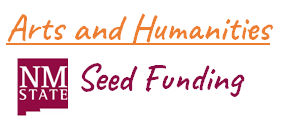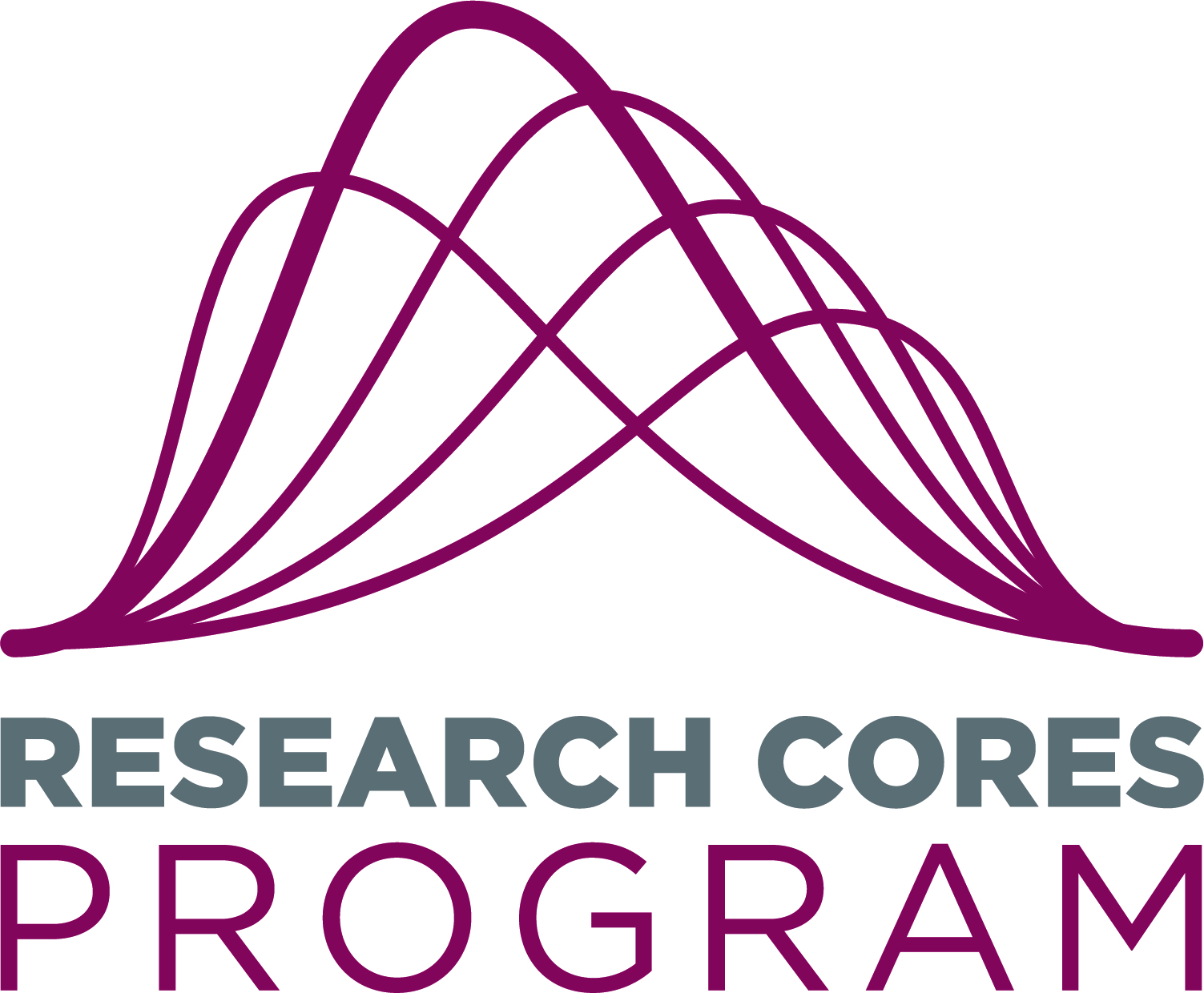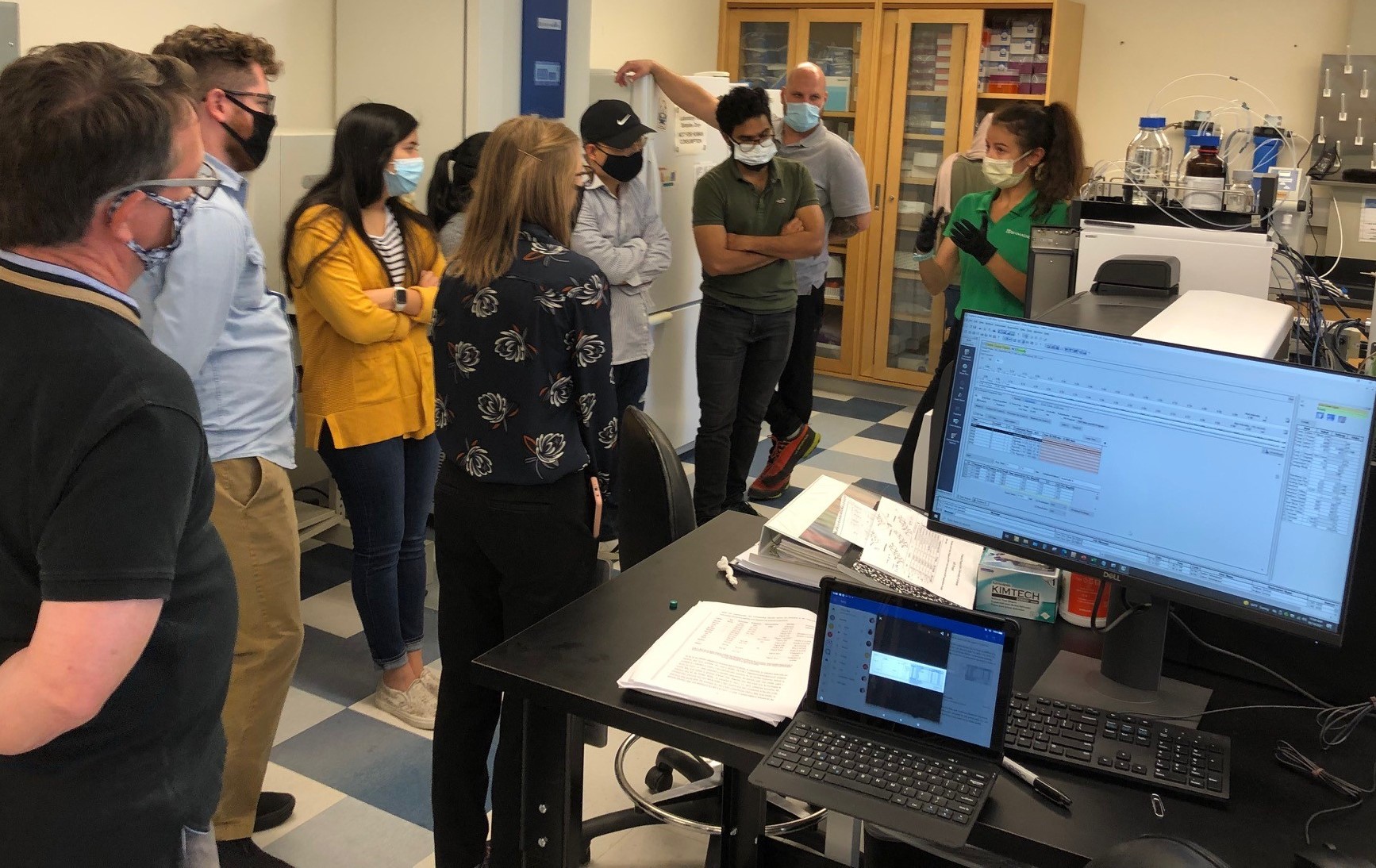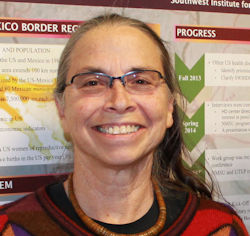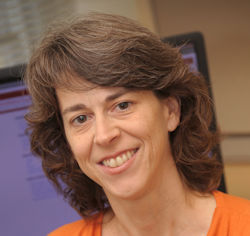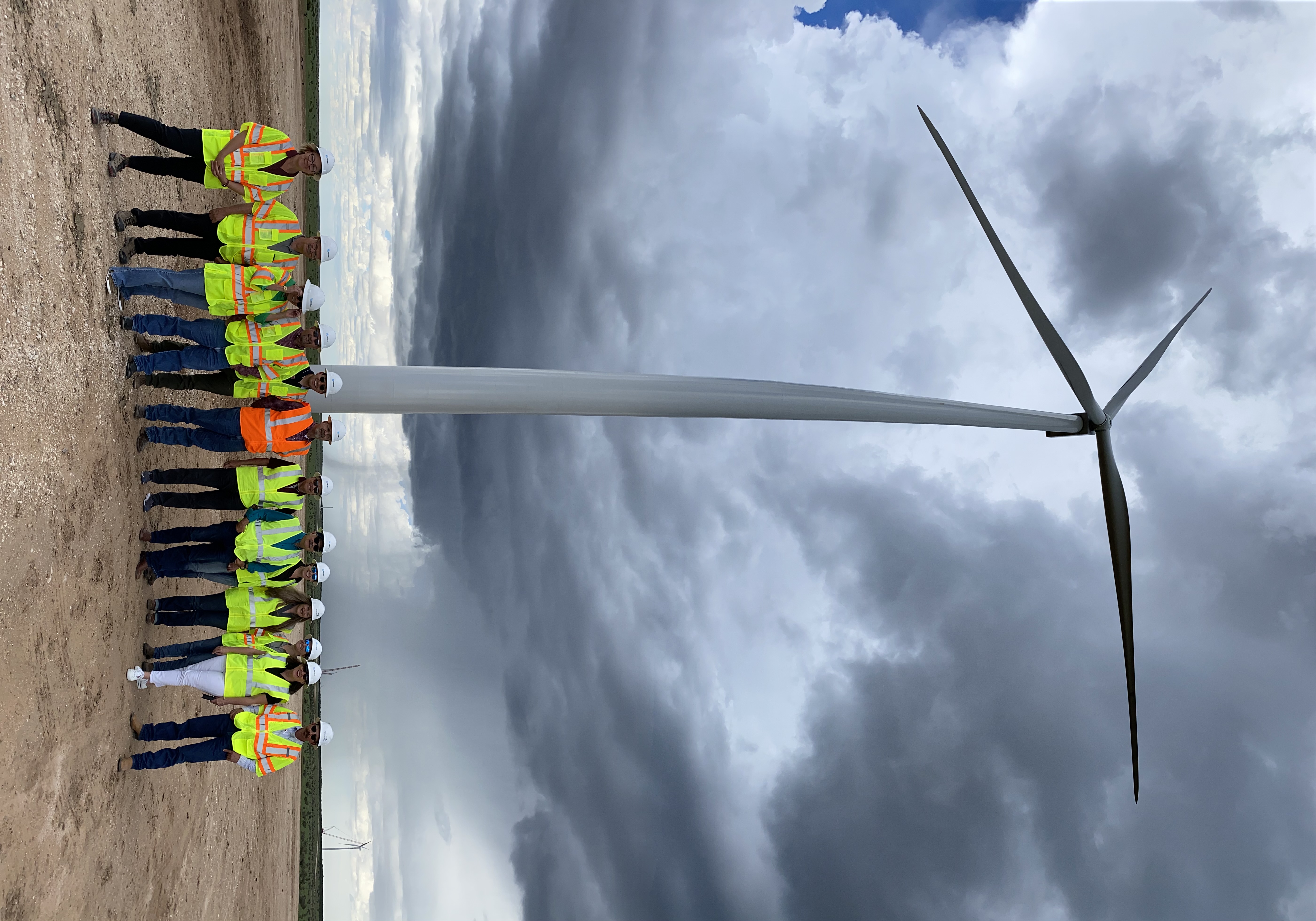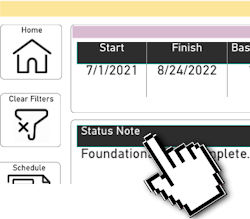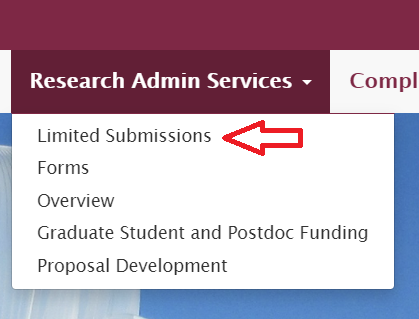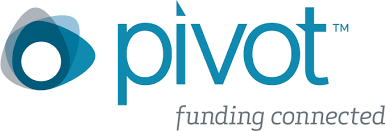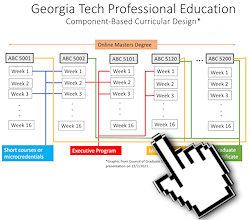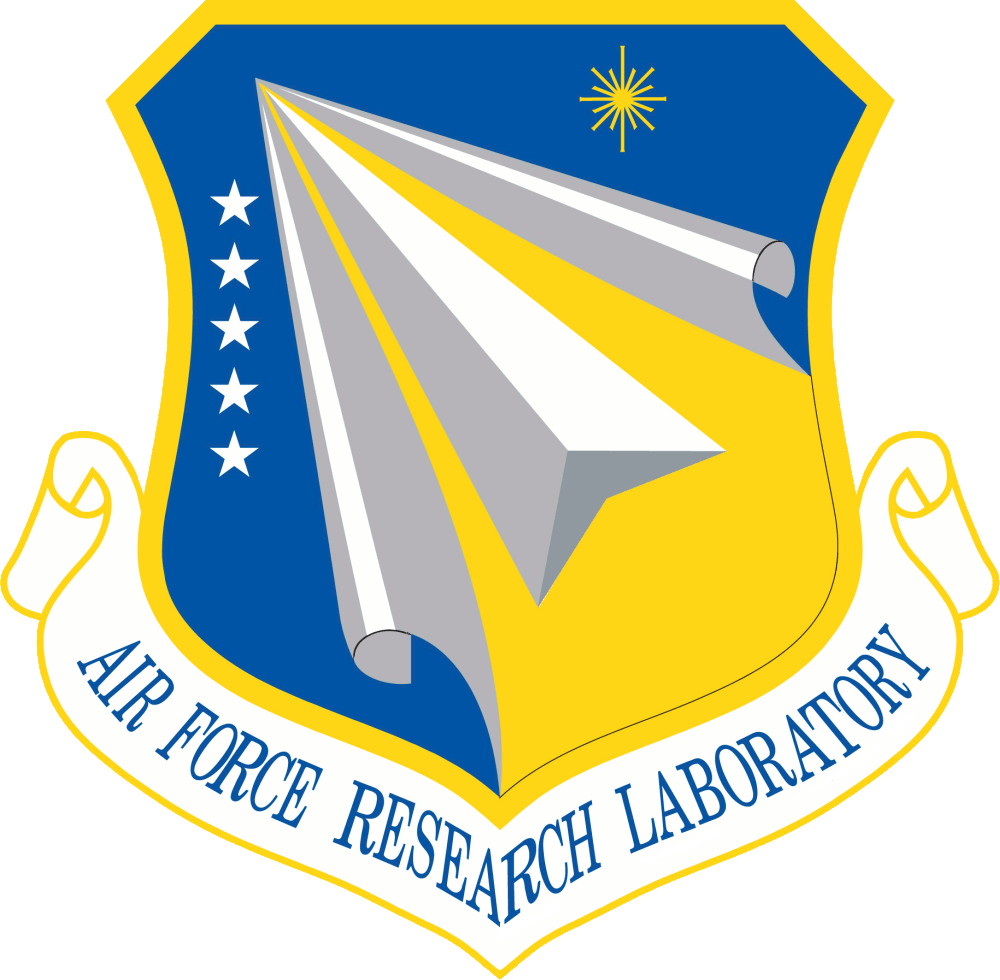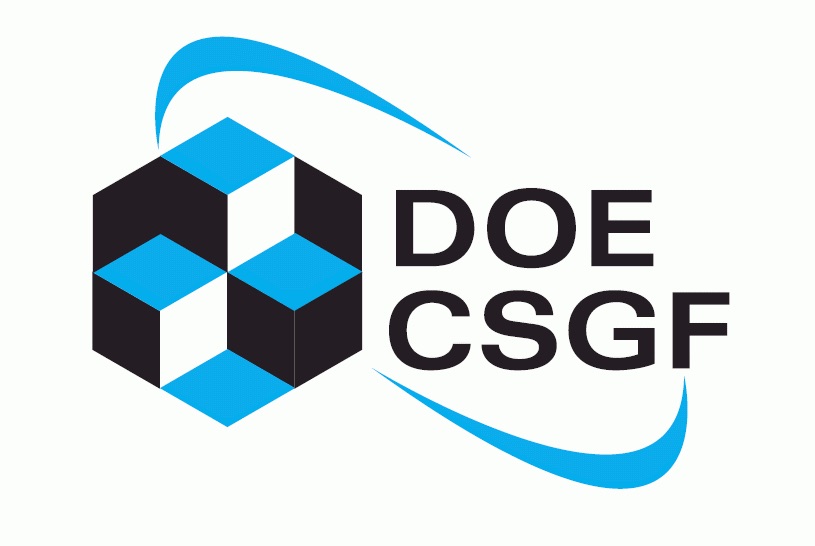 |
|
Northern Rio Grande Corridor Collaborative
By Luis Cifuentes, Ph.D., Vice President for Research and Dean of Graduate School and Jim Chavez, Senior Administrator in the Chancellor's Office
“I am hoping for the opportunity to help NMSU become a leading research university in the Southwest, anchoring the southern end of New Mexico’s Rio Grande Research Corridor.” The above statement was the last sentence of the letter of intent I sent to the search committee for the next Vice President for Research at New Mexico State University in June 2017. Almost four and a half years later, I along with colleague Jim Chavez am pleased to report on the Northern Rio Grande Corridor Collaborative (NRGCC). The NRGCC bring together the institutions along the Rio Grande Corridor (New Mexico State University, University of Texas El Paso, New Mexico Tech, University of New Mexico, Sandia and Los Alamos National Laboratories) to collaborate on large federal research, education and economic opportunities. The strategic goal(s) of the Northern Rio Grande Corridor Collaborative are to: 1) Generate Knowledge based on the wealth of scientific and technical talent that exists; 2) Increase Education (opportunities and level) along the Rio Grande Corridor and, 3) Create a workforce to support strategic areas of opportunity both locally and nationally; and (4) Generate economic development opportunities within the corridor. The goal of the NRGCC is to collaborate in areas where the collective impact of the group is greater than what could be achieved by individual entities. The concept for a collaboration of research institutions along the Rio Grande was created through discussions among the Chancellors, Presidents and Lab Directors in mid 2021. At the request of the Presidents and Lab Directors, the VPRs at the Universities and Laboratory Research leads at the National Labs were tasked, with leadership of Jim Chavez, to create the NRGCC. The Leadership team has been meeting on a bi-weekly basis this year to create and stand up the collaborative. An initial workshop, with over 40 participants (administrators and researchers) was held at New Mexico Tech in late August. To date:
The NRGCC structure should be completed by the beginning of 2022 and preparing to bid on emerging opportunities. Contact Jim Chavez at jimc@nmsu.edu for more information. We wish you a relaxing, healthy and safe Holiday Season. |
|
VPRGS Seed Funding to Support Arts and Humanities Scholarly Activities
By Phillip De Leon, Ph.D., Associate Vice President for Research
Office of the Vice President for Research and Dean of Graduate School will soon release a solicitation that seeks proposals for seed funding from faculty in the arts and humanities disciplines at NMSU. The solicitation is being developed by a committee which includes Drs. Julia Barello, Kerry Banazek, Fred Bugbee, Phillip De Leon, Elizabeth Horodowich, and James Murphy. This program is a step towards achieving the Goal 2, Objective 2.2 of NMSU’s LEADS 2025 that aims to “[i]ntentionally grow humanities, social sciences and creative arts to achieve comprehensive excellence in research and creative activity." It is also aligned with the Office's efforts to attain the R1 status. Please stay tuned and visit the program's website which will be updated with details about the solicitation. |
|
LEADS 2025 Goal 2 and the Research Cores ProgramBy Tanner Schaub, Ph.D., Director, Research Cores ProgramThe NMSU roadmap to “Elevate Research and Creativity” (LEADS 2025 Goal 2) recognizes significant opportunity to improve the research success of our faculty by 1) strengthening and leveraging our existing foundational research infrastructure and facilities 2) investing in new research equipment, facilities, programs, and personnel as a means to grow our institution and its impact. In January 2021, the NMSU Office of the Vice President for Research formed the Research Cores Program (RCP) in response to this opportunity. The RCP provides access to state-of-the-art research instrumentation and expertise, provides tools and management structures that relieve administrative burden from faculty and lab directors, and engages efforts to establish new research cores in emerging areas of research and technology. And we have been active! Without compiling a comprehensive review, here are a few of the important milestones achieved by the RCP in this first year.
Where are we going? Again, this is not a comprehensive list, but here are a few key areas of activity where we would like NMSU faculty to consider participating:
Please visit us at: https://research.nmsu.edu/RCP.html Go Aggies! |
Student and faculty researchers participate in a training workshop to learn how to use the new Shimadzu
|
Recognizing NMSU's Large Proposal Submitters (Month of November)
By Hamid Mansouri Rad, Ph.D., Senior Proposal Development Specialist, RAS
Congratulations to Drs. Jill McDonald and Charlotte Gard for submitting a proposal exceeding one million dollars in the month of November. Dr. Jill McDonald, Associate Dean for Research and Community Outreach of the College of Health, Education, and Social Transformation (HEST) and the Director of NMSU's Southwest Institute for Health Disparities Research along with Dr. Charlotte Gard, Associate Professor of Economics and International Business, submitted a proposal to National Institutes of Health, Minority Health and Health Disparities program for $3.3 million to address the overuse of cesarean delivery in New Mexico. According to Drs. McDonald and Gard, cesarean delivery contributes to acute and long-term morbidity among women and infants. The results of this project is expected to provide information needed to develop a tailored, multilevel intervention to reduce cesarean delivery disparities in New Mexico. Dr. McDonald can be reached at jillmcd@nmsu.edu. Dr. Gard can be reached at cgard@nmsu.edu.
|
Dr. Jill McDoald, Associate Dean for Research, College of HEST |
NM INBRE Program Solicits Proposals Relevant to Biomedical, Behavioral, Social, Health, Community, or Population-Based SciencesBy Shelley Lusetti, Ph.D., Director of the NM INBRE Program and Head of the Department of Chemistry and Biochemistry
New Mexico IDeA Networks of Biomedical Research Excellence (NM-INBRE) is seeking proposals for one-year research PILOT projects from researchers at NMSU working in areas relevant to biomedical, behavioral, social, health, community, or population-based sciences. Interested researchers must submit a complete proposal and application packet on or before February 1, 2022 through the NM INBRE Project Application Portal. This funding prioritizes short-term, highly focused projects that will result in peer-reviewed publications and/or federal research proposal(s). Investigators should propose a project period that does not exceed 12 months and falls between April 1, 2022 – March 31, 2023. Detailed descriptions of the Pilot project requirements and eligibility is available at NM-INBRE Support for Research. Proposal and application instructions are available at the application portal. |
|
The New Mexico Space Grant Consortium Highlighted the Work of NM Faculty at the 2021 New Mexico Research Symposium
By Paulo Oemig, Ph.D. Director, New Mexico Space Grant Consortium (NMSGC)
On Wednesday, November 10th, I hosted a panel session titled, “Venturing into Space: How New Mexico faculty is reaching for the stars and taking students along the journey.” The panel featured seven researchers from UNM, NMSU, and NMT who highlighted the diverse and exciting space research happening in New Mexico. Topics included inner ear sensor research for manned space missions, exploring the human-robot interaction and trust establishment, and novel additive manufacturing techniques using moon dust for decreasing radiation exposure for extraplanetary structures. Drs. Elba Serrano (NMSU), Marlena Fraune (NMSU), Douglas Cortes (NMSU), Sally Seidel (UNM), Fernando Moreu (UNM), Paul Fuierer (NMT), and Andrei Zagrai (NMT) discussed their research in relation to NewSpace, NASA, and their students. NewSpace, the influence of the private sector into all space-related efforts, and NASA’s Artemis program are making possible the realization of crewed long-term duration missions. New Mexico faculty are contributing toward this effort and the NMSGC and New Mexico NASA EPSCoR are supporting their research. The panel, representing the three research universities in the state, presented their research, their motivations to study out of this world concepts, and how their students gain experience into new space. Panelists are responding to the needs of a not-too-distant future where habitats on the Moon and Mars will one day materialize. The panel discussed some aspects of their research for making the dream of humans to travel and thrive in outer space safe and feasible. Everything begins with an idea; the panel shared some of their wildest ideas and entertained the wildest questions. To view the recorded panel session, click here.
|
|
Corona Range and Livestock Research Center's Annual Field Day
By Cindy Ramirez, Proposal Development Specialist, NMSU
The week of November 2-5 brought us Research and Creativity week where we celebrated all aspects of research and creative activity here at NMSU. This week also provided us with an opportunity to explore the research and creativity occurring at one of our off-campus research centers as well. The Corona Range and Livestock Research Center held its annual field day on November 3rd to highlight three years of research and provide an update of the newly constructed wind farm near the center. The field day opened with a reception, keynote address, and poster presentations by researchers and graduate students conducting research at the center. Lunch was provided for all attendees and allowed for attendees to interact and learn more on how the research at the center will benefit them. The day closed with an update and visit to the wind turbines by the New Mexico Director of Operations of Pattern Energy. The Center will have 39 turbines installed on ranch property and the income generated from the wind farm will enhance the mission to provide research and outreach to New Mexico. Most College of ACES statewide Agricultural Experiment Station Centers host field days each year in late summer or fall. The Field Day schedule for 2022 will be posted in early spring and updated dates and information can be found at their website https://aces.nmsu.edu/aes/field-days.html. |
NMSU's recently installed wind
|
Streamlyne Update
By Phillip De Leon, Ph.D., Associate Vice President for Research
|
Streamlye Project Dashboard
|
Workshop on Developing Effective ProposalsCindy Ramirez, Proposal Development Specialist, NMSU
As part of the Principal Investigator (PI) Academy training program, Dr. Hamid Mansouri Rad, Senior Proposal Development Specialist with Research Administration Services will hold a workshop on strategies to develop effective proposals on December 14 from 3:00 to 4:00pm (MT). "I’ve been involved in proposal development for more than 15 years and have noticed how proposals often fail not due to issues regarding their scientific merits, but because of non-technical issues that are important and need to be addressed," he states. NMSU faculty and staff who are not members of the 2021-2022 PI Academy are welcome to register for this workshop by sending an email to hamid@nmsu.edu subject line "Workshop." |
|
New Mexico SBIR/STTR Innovation Summit
By Hamid Mansouri Rad, Ph.D. Senior Proposal Development Specialist, NMSU
NMSU Arrowhead Center's NM FAST program, which provides free SBIR/STTR proposal development assistance to businesses in NM, will be hosting its fifth annual NM SBIR/STTR Innovation Summit on Wednesday, December 15th. Because of continued COVID-19 restrictions, the event will be hosted virtually. "It will be a day packed full of informative panels, interactive booths, and the ability to meet one-on-one with SBIR/STTR program managers," states Dana DeRego Catron, Director of the NM FAST SBIR/STTR Program. Registration for the Summit is free, and can be accessed at: https://arrowheadcenter.nmsu.edu/program/nm-fast/innovation-summit/ |
|
Limited Submission Funding OpportunitiesBy Hamid Mansouri Rad, Ph.D., Senior Proposal Development Specialist, RASResearch Administration Services maintains a list of limited submission funding opportunities for NMSU research community. The list is accessible through a link on the Research website, through the Research Administration tab. NMSU users can also access the list directly on SharePoint. We encourage NMSU researchers to periodically visit the site and if they are interested in any of the opportunities to please inform us by sending email to ras@nmsu.edu. |
|
Pivot Funding Opportunity Database
By Hamid Mansouri Rad, Ph.D., Senior Proposal Development Specialist, RAS
This is a reminder that in order to assist NMSU faculty and staff in locating external funding opportunities, the OVPRGS has purchased a subscription to ProQuest’s Pivot available at https://pivot.proquest.com/session/login.
To request a one-on-one or group Pivot training, send email to hamid@nmsu.edu. |
|
Graduate School |
|
New graduate program development wisdom from the Council of Graduate Schools (CGS)
By Carol Flinchbaugh, Ph.D., Associate Professor of Management and Interim Associate Dean, Graduate School
The Council of Graduate Schools (CGS) annual meeting was held last week. One session that I found valuable to NMSU focused on the "wins" and "losses" of new graduate program development across three different universities: Georgia Institute of Technology, Marquette University, and North Carolina Agricultural & Technical State University. The Vice Provosts (VP) of graduate programs at each of these schools shared information that could inform graduate program development at NMSU. I’ll share the “nuggets” that I found most beneficial.
|
|
AFRL Scholars Program Call for Applications
By Chong-Hwey Fee, Proposal Development Specialist, RAS
Air Force Research Lab (AFRL) Summer 2022 internships are available at multiple AFRL sites across the US, in a wide range of technical areas. Students interested in spending an exciting summer working on hands-on projects at any of AFRL’s supported sites, be sure to submit an application before the deadline! For more information visit the AFRL Scholars website. Application deadline: Jan 10, 2022 To learn more, please register for the AFRL Scholars program webinar to be held on December 15, 2021 at 11AM – noon MST. |
|
Department of Energy CSGF (Computational Science Graduate Fellowship)
By Chong-Hwey Fee, Proposal Development Specialist, RAS
The annual DOE CSGF (Computational Science Graduate Fellowship) application process is currently open. The DOE CSGF accepts students engaged in traditional, application-focused computational science research and those pursuing applied mathematics, statistics or computer science research enabling the use of emerging high-performance computing (HPC) systems without a specific application. Together, they will meet the DOE's growing needs to build and efficiently operate the latest, most powerful HPC systems and apply those systems to problems of national importance. During the fellowship period, fellows are required to be enrolled as full-time graduate students at an accredited U.S. college or university and conduct research in areas of interest to the DOE. To learn more about eligibility requirements and benefits, please vist the CSGF website Application deadline: January 12, 2022 |
|
Need Guidance on Securing External Funding? Contact Me!
If you are an NMSU graduate student or post-doctoral scholar needing guidance on securing external funding, please contact me at fee@nmsu.edu. Please also visit the list of current funding opportunities that I maintain on SharePoint and let me know if you have any questions. Chong-Hwey Fee |
|
Questions and comments regarding NMSU’s Research Digest should be directed to Hamid Mansouri Rad, Ph.D. at hamid@nmsu.edu, (575) 646-6429. |
|

